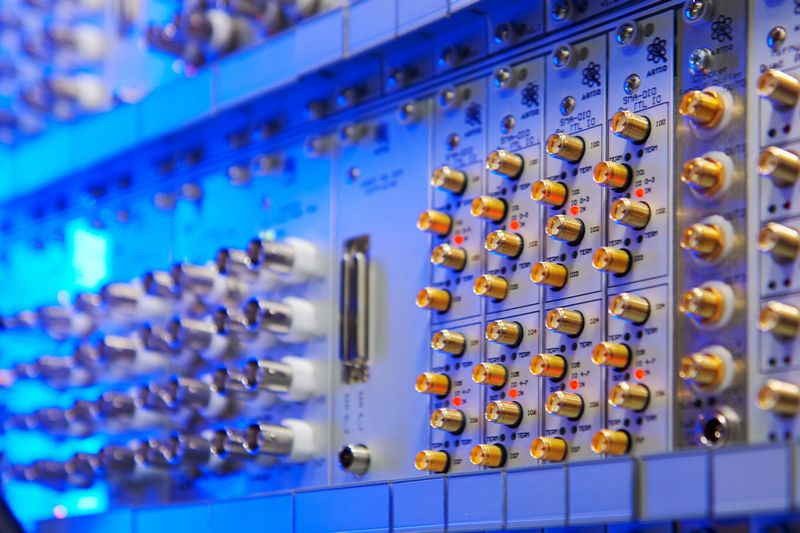Creotech Instruments has developed a subsystem to mitigate errors and enhance the performance of quantum computers. The subsystem offers a hundred times lower level of information distortion than its previous version, as well as remote control and diagnostics capabilities. It also takes up several times less space compared to competing systems. The product already features in the company’s offering and is currently used in AQTION, a leading EU project carried out by a consortium led by scientists from the University of Innsbruck.
One of the biggest hurdles in quantum computer development today is handling errors that arise during quantum computation. Traditional computers are also affected by such errors but with lower frequency. They are also easier and faster to detect and correct. In the case of quantum computers, other error detection and correction methods are used.
Creotech Instruments’ ion trap-based Sinara line products are a critical element of the quantum computer control system built under the umbrella of AQTION, which is part of Quantum Flagship, a research and innovation initiative funded by the European Commission. AQTION is coordinated by the University of Innsbruck and carried out by Europe’s leading experts in quantum technologies. One of the subsystems provided by Creotech is the HL Booster.
“We have launched an innovative system for building state-of-the-art quantum computers. We hope that it will boost the company’s 2022 revenues in the quantum computing segment and position us to win new customers. Our ambition for 2024-25, as envisaged in our strategic plans, is to become a supplier of a fully-fledged quantum computing control system as one of a handful of companies globally,” said Grzegorz Brona, President of the Management Board of Creotech Instruments S.A.
This year, Creotech’s compact quantum computer prototype developed as part of AQTION demonstrated key quantum gates on ten qubits and obtained an entangled state of 24 ions. The project’s deliverable is a 50-qubit quantum computer compliant with technical IT standards, with its demonstration expected next year. Qubits developed using the ion trap technology offer a significantly lower error rate compared to superconducting qubits. For this reason, an ion-trap quantum computer having around a dozen qubits can easily outperform a 50-qubit counterpart developed using a different technology.
“We’ve developed and manufactured, among others, an HL Booster, offering up to a 100 times lower harmonic distortion related to signal transmission precision. This translates to superior quantum computer parameters, which in turn ensures improved quality of qubit operations. The system takes up several times less space than competing solutions and consumes much less power. Most importantly, it provides remote control and self-diagnosis capabilities unlike other available subsystems,” says Grzegorz Kasprowicz, PhD, Eng, Director of Technology and co-founder of Creotech Instruments S.A.
The current quantum computer prototype developed as part of the AQTION project is among the most advanced in Europe and has gained much popularity as it demonstrates a high degree of integration – it can fit in in two 19-inch server racks and does not require any custom-made lab environment. The target 50-qubit processor, also based on subsystems provided by Creotech Instruments, will mark a major milestone in the development of quantum technologies.

 Subscribe to receive latest news:
Subscribe to receive latest news: